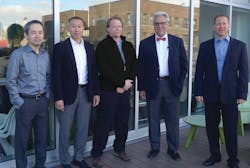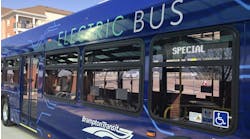di Domenico + Partners has announced the appointments of Paul Alber, Ricky Liu and Kenji Suzuki as associate principals.
The new designation has been established to reinforce leadership within the firm’s growing architecture, landscape architecture and urban design studio in Long Island City, N.Y. The three share the responsibilities of guiding and overseeing the primary activities of the studio, alongside founding Principals John di Domenico and Andrew Berger.
The three associate principals have collaborated on many of the studio’s projects over the past decade. They also come from a long tradition of NYIT alumni who join Professor John di Domenico in the firm’s civic, transportation, and academic project specialties.
Paul Alber, AIA has over 25 years of experience and has played a key role in managing the feasibility studies, design, and construction administration of many of the firm's public sector projects, including both renovation and new construction. He has led design teams in the development of K through 12 education projects that include classrooms, libraries, media centers and a black box theater.
Ricky Liu, AIA, LEED AP brings over 15 years of expertise in the design, coordination and management of a wide range of projects that include exemplary experience in academic buildings for higher education as well as transportation projects for mass transit systems and high speed rail that include station design and planning. He is well-versed in the complex issues inherent with the planning, design, restoration, and adaptive reuse of structures. His role as both a project manager and senior designer contribute to his effectiveness in all phases of the design process while being attuned to preserving design integrity.
Kenji Suzuki, AIA has over 17 years of experience and is responsible for developing feasibility studies and conceptual design approaches for various transportation, education and public facilities. His skills in design, construction and virtual modeling (including BIM) have been instrumental in development of projects from concept to completion. The visualization component of the design process is an imperative communication tool for the team, the client and community alike. He generates, through virtual modeling, design schemes for the diverse number of projects undertaken by the studio.



